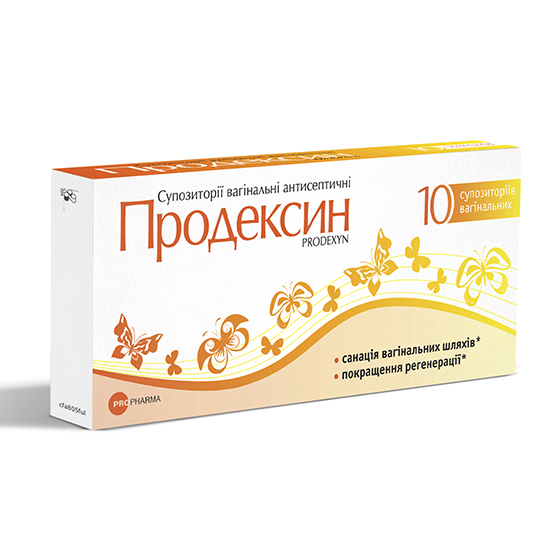
Prodexyn
ProdexynVaginal suppositories Prodexyn are recommended for the sanitation of the vaginal tract and the normalization of the vagina. They have an antiseptic, regenerating and metabolic effect, which is aimed at maintaining the natural defense mechanisms of the vagina against genital infections.
Indications for use (instruction): Prodexyn
Prodexyn is intended for use in order to normalize the physiological state of the vaginal environment, including for the rehabilitation of the vaginal tract with the threat of the development of infectious and inflammatory diseases and complications in obstetrics and gynecology, with bacterial vaginosis, acute and chronic vaginitis, nonspecific colpitis, endo / exocervicitis, ectopia cervix, true erosion of the cervix of a specific etiology before and after childbirth, abortion, the establishment of an intrauterine device, surgical interventions for gynecological diseases, the use of aggressive methods of treatment on the cervix or vagina; before intrauterine studies; to improve the regeneration of the vaginal mucosa and cervix after destructive methods of treatment (diathermocoagulation, cryodestruction, laser destruction). It is recommended to consult a doctor before use.
How to use
Apply to adults intravaginally 1-2 times a day for 7–10 days. If necessary, the course of application is continued for up to 20 days. The vaginal suppository should be inserted deep into the vagina while lying on your back with your legs slightly bent.
Contraindications
Hypersensitivity to any component, the first trimester of pregnancy.
Composition
1 vaginal suppository contains: active components: octenidine dihydrochloride – 2 mg, dexpanthenol – 100 mg. Excipients: macrogol 4000, macrogol 400.
Release form
Vaginal suppositories No. 10.
Storage conditions
Store in the original package in a place out of the reach of children at a temperature not exceeding 25°C.
Manufacturer
RubiPharm Arzneimittel Gmbh, Germany.
Sanitary and hygienic conclusion
UA.MD.512-22 from 22.12.2022 year and UA.DE.166-22 from 22.12.2022 year.

This section of the site contains information about medicines, their properties, methods of use, as well as other specialized information that is intended for healthcare professionals. The information on medicines contained in this section is not a guide for self-diagnosis and / or treatment. LLC SA Pro-Pharma is not responsible for possible negative consequences arising from the independent use of information from this section. Using the information from this section, you do it yourself, understanding that: self-medication can be harmful to your health, you must read the instructions and consult a doctor before using medicines.